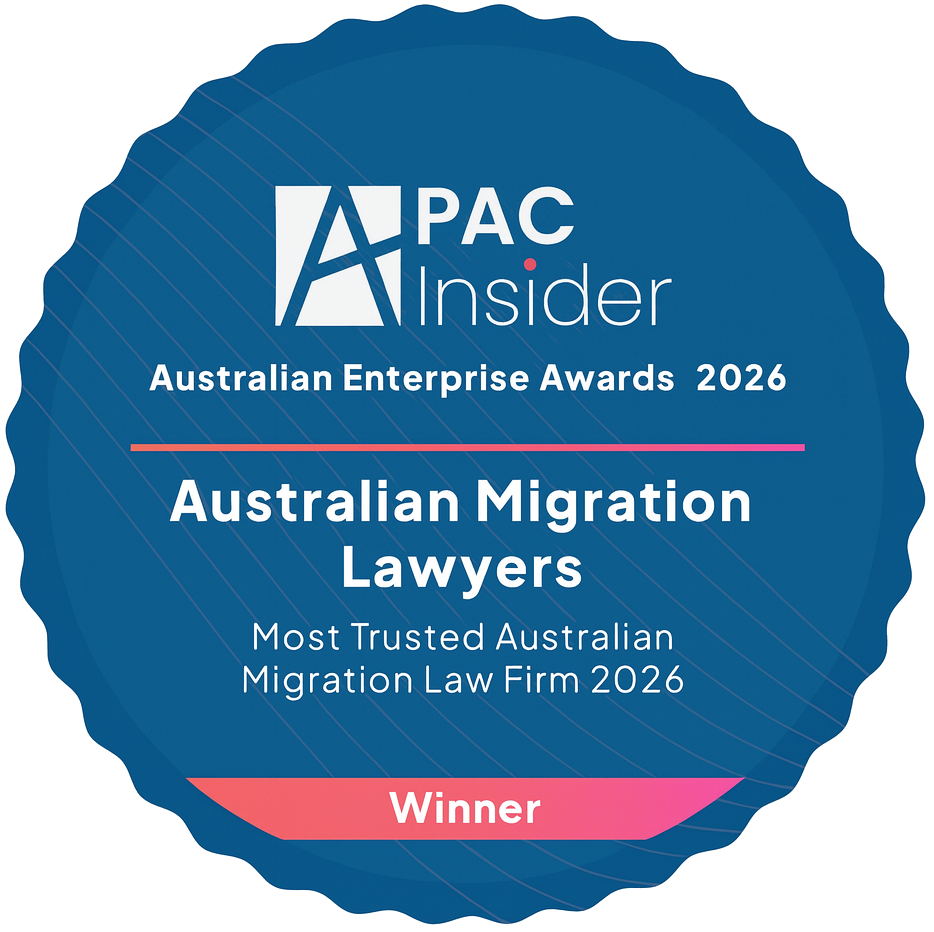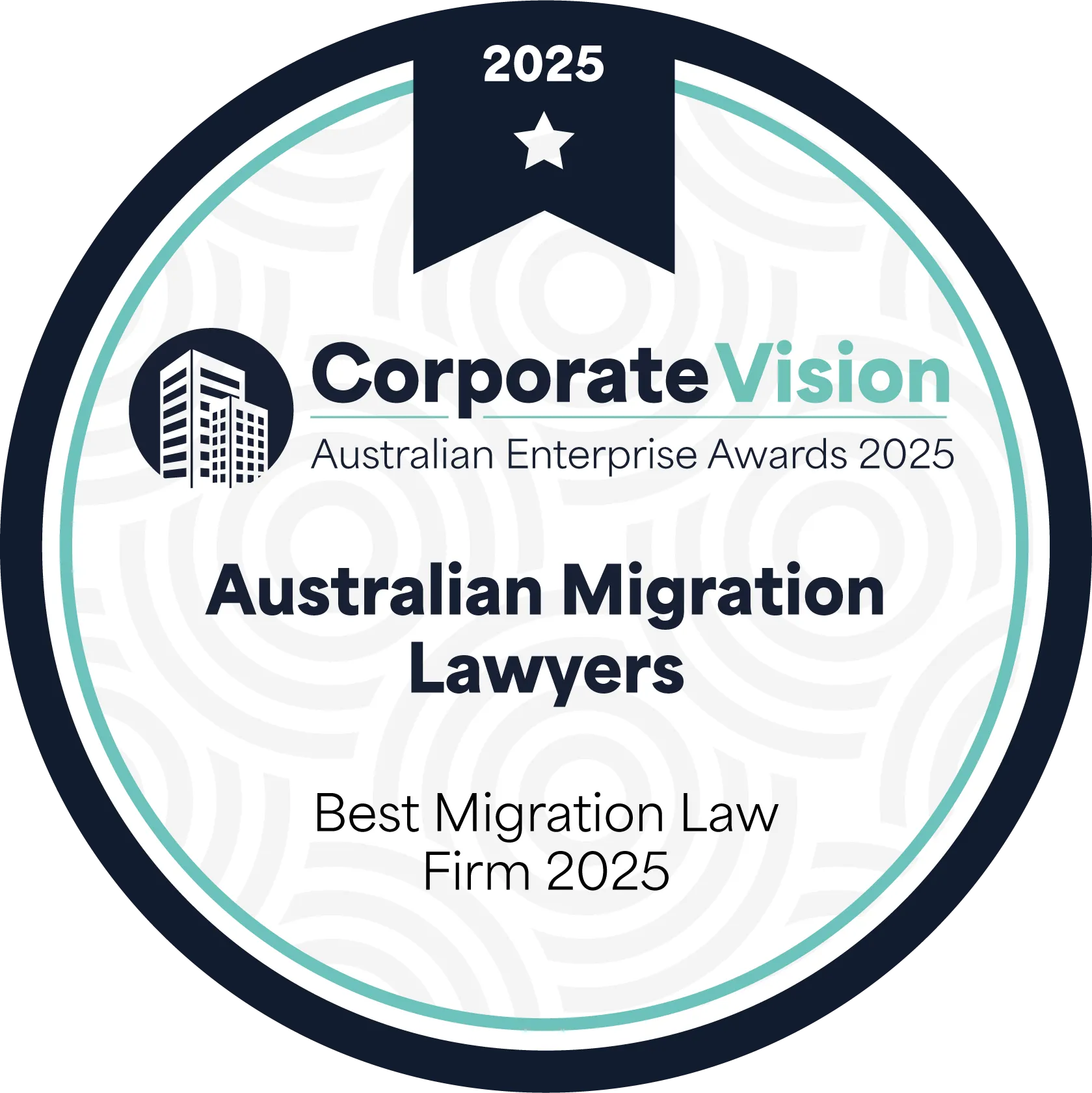Australia's largest independent migration law firm. Open 7 days! Book here.
Need help? We are available 7 days a week.

.webp)

Winner of Most Trusted Australian Migration Law Firm 2023-2026

Ranked 1st for migration law in 2023, 2024 & 2025

Ranked in the top migration lawyers 2023, 2024 & 2025

Ranked the best migration law firm 2024 & 2025
%20(1).webp)
The journey to Australian permanent residency for partners doesn’t end with the temporary partner visa. For individuals holding a Subclass 820 (onshore) or Subclass 309 (offshore) Partner visa, the second stage, leading to the permanent Partner visa (Subclass 801 for onshore applicants or Subclass 100 for offshore applicants), is the crucial next step. This second-stage assessment is a critical part of both the onshore and offshore partner visa pathways. Understanding how and when to transition is essential for applicants in a genuine and continuing relationship with an Australian citizen, Australian permanent resident, or eligible New Zealand citizen. This guide outlines what you need to know to prepare for your permanent Partner visa application.
The 801 Partner visa (onshore) and the 100 Partner visa (offshore) are the permanent stages of Australia’s two-stage partner visa programs. Functionally, they grant the same rights. A permanent partner visa allows an eligible visa applicant to live in Australia indefinitely, access Medicare, work and study freely, and eventually apply for Australian citizenship. To be eligible, you must have held a temporary partner visa (Subclass 820 or 309) for at least two years and still be in a genuine and continuing relationship with your sponsor.
This permanent visa grants you the ability to live in Australia permanently and offers a direct pathway to becoming a full citizen. The team at Australian Migration Lawyers can provide guidance throughout this critical application process.
When you first apply for a Partner visa, whether it is the onshore Subclass 820/801 stream or the offshore Subclass 309/100 stream, you are applying for both the temporary and the permanent visa at the same time and paying a single visa application charge. This is known as a combined application and is a key feature of the partner visa process designed by the Australian Government.
The Department of Home Affairs first assesses your application for the temporary visa, often referred to as the first stage. If granted, this substantive visa allows you to live in Australia (or travel to and live in Australia, in the case of the 309 visa) while you wait for the final decision on your permanent partner visa. The second stage of the assessment typically begins two years after you lodged your initial combined application. It is not a new application, but a continuation that requires you to provide evidence that your relationship has continued.
To progress to the permanent partner visa (Subclass 801 or Subclass 100), you must continue to demonstrate that your relationship remains genuine and ongoing. This applies whether you’re in a marriage or a de facto relationship. The Department of Home Affairs will reassess your circumstances to ensure you still meet the requirements.
Your sponsor must continue to be an Australian citizen, an Australian permanent resident, or an eligible New Zealand citizen. Their obligations continue into the second stage, and they will need to provide documents and a statement confirming the ongoing nature of your relationship.
As the applicant, you must continue to meet all visa conditions and character requirements. You must also be sponsored by the same partner who sponsored you for the temporary visa, except in certain limited circumstances.
For most applicants, eligibility for the permanent visa assessment occurs two years from the date you submitted your initial combined partner visa application. For example, if you applied on 1 August 2023, you would generally become eligible for the permanent visa assessment on 1 August 2025. The Department usually sends a notification inviting you to submit your second-stage documents around this time.
The core of the second stage application is to provide evidence that your relationship has not only continued but has also developed since your temporary visa grant. From our experience, consistent and thorough evidence is key to a smooth permanent partner visa assessment. You must prove to the Department that you and your partner or spouse share a mutual commitment to a shared life to the exclusion of all others.
Evidence must typically cover four key areas:
You should continue to provide evidence and keep records even after your temporary visa is granted, as the Department of Home Affairs will assess the relationship again for the permanent Partner visa.
Applicants are usually invited to provide documents for the permanent Partner visa two years after their initial combined visa application was lodged. The Department will reassess your relationship and may request further information or additional documents. At this stage, it’s critical to provide complete and updated documentation that reflects your shared life since the temporary visa grant. Mistakes or omissions may delay processing or risk a partner visa refusal.
While individual cases vary, the following categories of documents are commonly required for the second stage for both the 801 and 100 visas:
Common issues that may impact your permanent partner visa application include:
In certain circumstances, you may be eligible for the permanent partner visa even if your relationship with your partner ends. These situations include:
These are complex situations, and it is crucial to get professional legal advice to understand your options.
Another route to a permanent partner visa is through the Prospective Marriage visa (Subclass 300). This temporary visa is for individuals who are outside Australia and intend to marry their Australian citizen, permanent resident, or eligible New Zealand citizen fiancé.
Once granted, the visa holder must enter Australia, marry their partner, and then apply for a combined temporary and permanent partner visa (Subclass 820 and 801) before the Subclass 300 visa expires. After lodging the 820 visa application, the applicant is typically granted a Bridging Visa which allows them to remain in Australia during the processing time.
Our team at Australian Migration Lawyers offers dedicated support for Stage 2 of the Partner visa process. We help clients gather compelling relationship evidence, respond to requests from the Department, and prepare a clear and well-organised application to maximise your chances of success. Whether you are progressing from a Subclass 820 to an 801 visa, or from a Subclass 309 to a 100 visa, the requirements for the second stage are broadly the same, and our team has extensive experience with both pathways.
A permanent partner visa is a significant step toward building your future in Australia. Navigating the requirements for the second stage can feel complex, but you do not have to do it alone. Contact Australian Migration Lawyers today for a consultation to ensure your transition to permanent residence is smooth, secure, and supported by professionals.

We have created comprehensive visa guides that outline the ins and outs of visa applications. Get yours today.